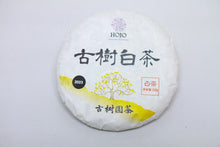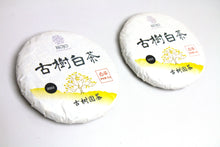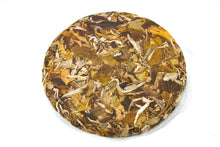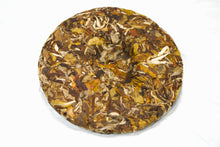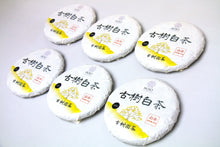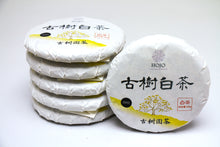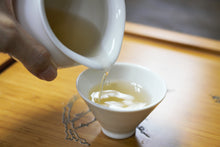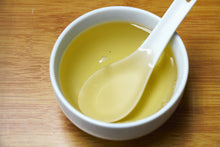
A rare white tea made from old tea trees grown naturally in a high-mountain, pesticide-free, and fertilizer-free garden in spring. The tea garden follows sustainable farming practices, maintaining a balanced ecosystem where the tea trees grow untrimmed and the weeds are left undisturbed. As a result, the tea trees grow slowly, absorbing high levels of nutrients and minerals from the soil, which is reflected in the tea’s rich and lingering aftertaste.
The tea offers a smooth, soft drinking experience with a long-lasting aftertaste that gently travels down the throat. It has a sweet floral aroma, a hint of fresh grassiness, and a delicate honey-like sweetness.
Tea cakes tend to mature faster than loose leaf tea due to the compression process. When the tea leaves are steamed, pressed into a disc shape, and naturally dried over a few days, a secondary fermentation occurs, speeding up the aging process. After some time, you will notice sweet dried fruit or floral notes emerging from the tea cake.
If handling a tea cake seems tricky or if you don't have the proper tools to break it into smaller pieces, don’t worry! Feel free to send us a message, and we’ll gladly cut it into smaller portions for you. The tea will be vacuum-sealed in an aluminum zipper bag with a deoxidizer to maintain its freshness.

Ancient Tree White is crafted from tea leaves harvested from an ancient tea garden situated at 2100-2200m in Zhenkang County, Lincang, Yunnan. The garden is owned by a trusted manufacturer who collaborates closely with us each year. We specifically select fresh leaves from the old tea trees in this garden, which are remarkable for their size—some with trunks as thick as an adult’s waist.
Most importantly, the garden follows completely sustainable practices, using no fertilizers or pesticides. Due to the high altitude, sustainability, and age of the trees, the tea grows at a much slower pace. While other gardens are ready for plucking in April, the trees in this garden barely have small sprouts at that time. The first flush of spring tea from this garden isn’t ready until May.
This slow growth allows the tea to develop a rich content of polyphenols and minerals, giving Ancient Tree White a complex, thick, and long-lasting flavor with a deep and satisfying aftertaste.
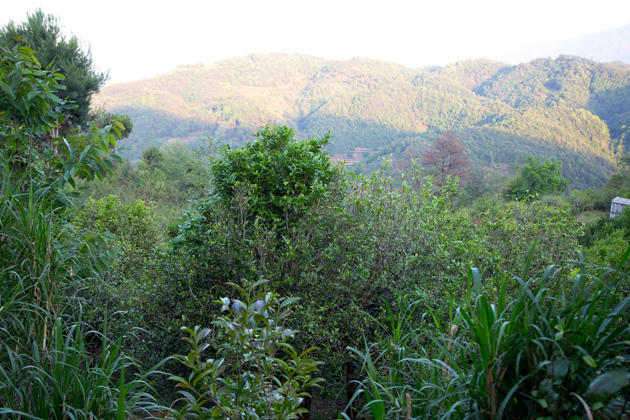



White tea contains active enzymes
Unlike other types of tea, white tea retains its active enzymes due to the absence of a heating process during production. Traditionally, after tea leaves are plucked, they are spread on bamboo mats to gradually dehydrate in a process called withering. During withering, the leaves undergo mild oxidation, which enhances their floral aroma. In contrast, oolong and black teas require pan-frying to deactivate the enzymes. With white tea, however, the withering and drying happen simultaneously, without applying heat at any stage. This is why white tea preserves its active enzymes.


Cold water brewing delivers excellent results
White tea contains active enzymes that promote mild oxidation when brewed with hot water, which can change the leaf color from green to beige. Hot water brewing tends to bring out a fruitier flavor in white tea. Additionally, tea brewed in cold water contains less caffeine and lacks any bitterness.
If you want to preserve the fresh green color of the tea leaves and enjoy a delicate floral flavor, try brewing white tea in cold water. Typically, we recommend using 5 grams of tea leaves in 1.5 to 2 liters of water. For an even better flavor, use water that has been boiled and then cooled down. Simply steep the tea leaves in cold water and refrigerate for more than half a day. Cold-brewed white tea is often a favorite among children as well.








